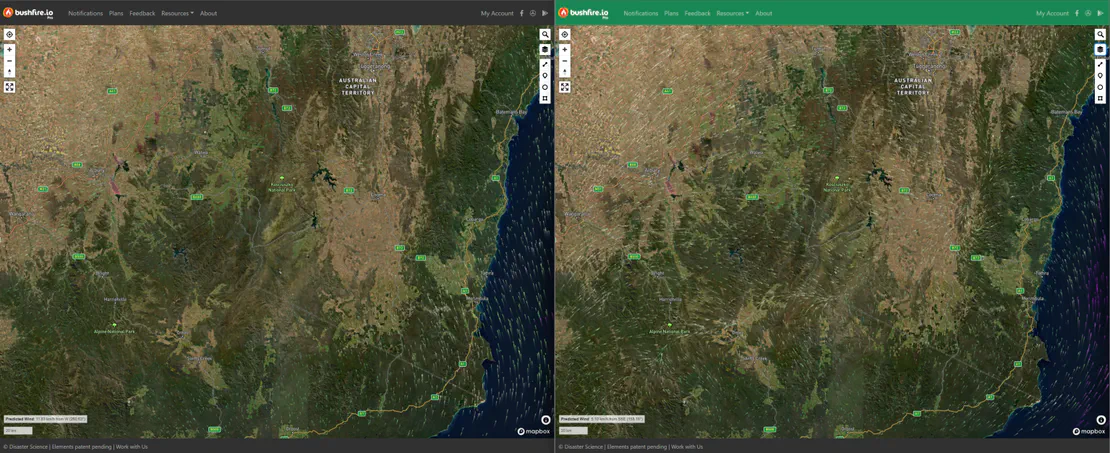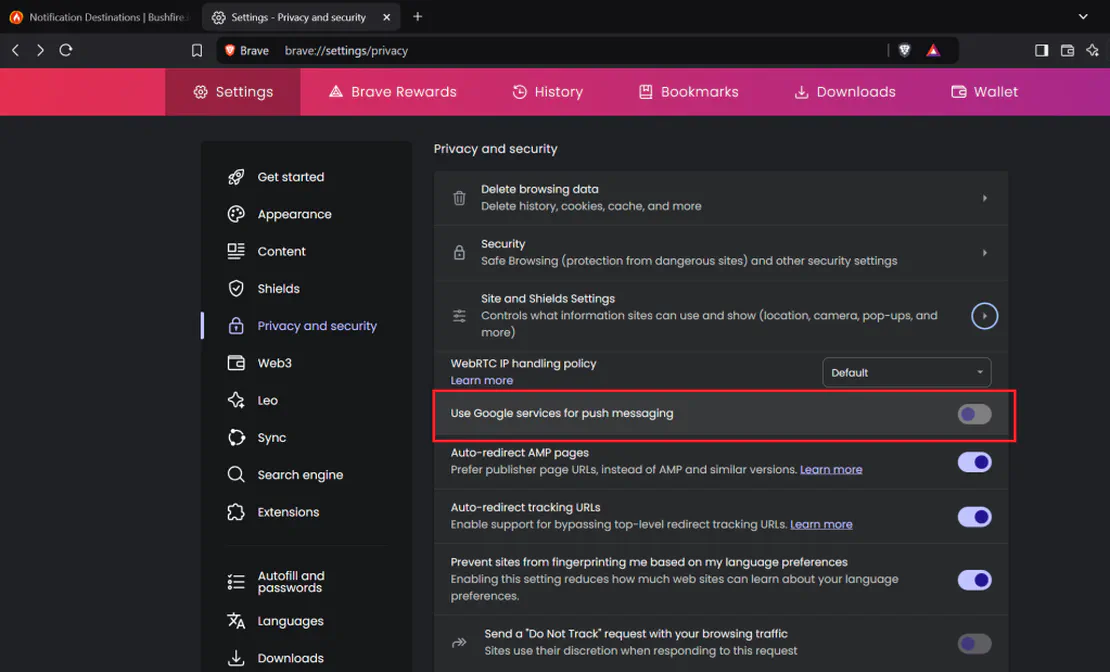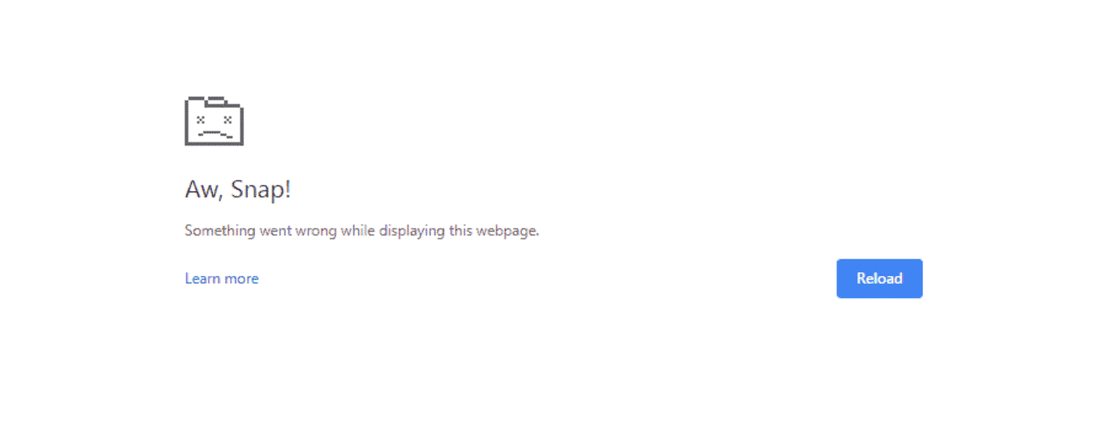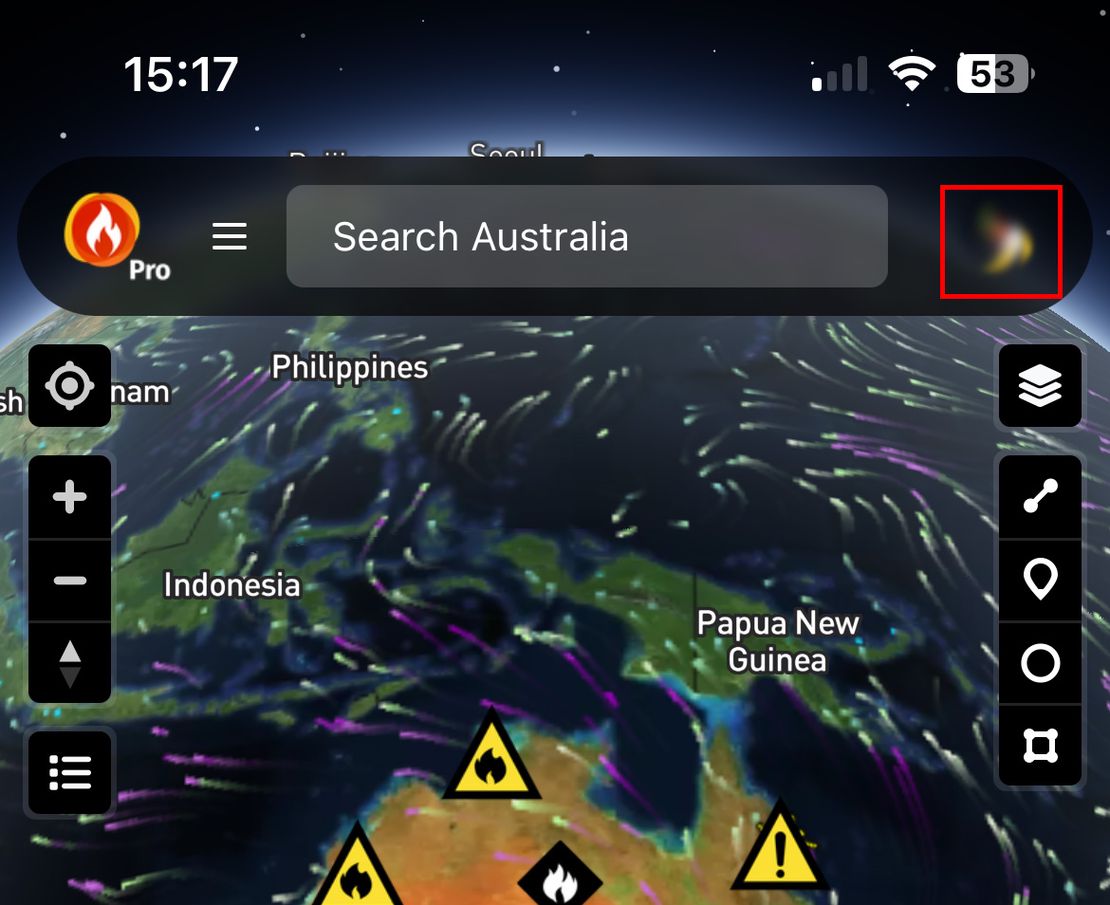
How-to use different wind models
- Disaster Science
- Bushfire.io pro
- December 29, 2022
Table of Contents
Bushfire.io Pro users can access multiple wind forecast models—including our new Australian Digital Forecast Database (ADFD) for Pro subscribers. ADFD is maintained by the Bureau of Meteorology (BoM) and better integrates local terrain and weather observations into its forecasts, making it especially reliable for Australian conditions.
Info
Requires a subscription to Bushfire.io Pro, Business or Enterprise.
Free vs. Pro Model Support
Free Users:
- GFS 1° – a global model provided by the National Oceanic and Atmospheric Administration (NOAA), updated 4 times per day.
Pro Users:
- GFS 0.25° (Global) – a higher-resolution version of GFS for more precise forecasts.
- HRRR (USA) – a high-resolution model optimized for short-term and localized weather events in the United States.
- NAM (USA) – a regional North American model that balances resolution and forecast duration.
- ADFD (Australia) – a detailed Australian model used in BoM’s own MetEye forecasts and official bulletins.
ADFD often outperforms GFS in Australia due to its higher resolution and explicit inclusion of local factors such as terrain variations, coastlines, and meteorological phenomena unique to the region. However, GFS remains valuable for global coverage and frequent updates, especially in areas without robust regional models.
Wind Model Comparison
Below is a quick-reference table highlighting our available wind models, their authors, coverage, typical accuracy, and other major uses.
| Model | Availability | Authors | Location / Domain | Approx. Resolution | Forecast Steps |
|---|---|---|---|---|---|
| GFS 1° | Free | National Oceanic and Atmospheric Administration (NOAA) | Global | ~111 km (1 degree) | x4 daily |
| GFS 0.25° | Pro | National Oceanic and Atmospheric Administration (NOAA) | Global | ~30 km | x4 daily |
| HRRR | Pro | National Oceanic and Atmospheric Administration (NOAA) | Continental US | ~3 km | hourly |
| NAM | Pro | National Oceanic and Atmospheric Administration (NOAA) | North America | ~12 km | 4x daily |
| ADFD | Pro | Bureau of Meteorology (BOM) | Australia | ~6 km (0.06 degrees) | 2x daily |
Why Multiple Models?
Note
While some models offer finer resolution, they may cover smaller areas or shorter forecast periods. Likewise, a model with frequent updates may not be as granular but can capture rapidly changing conditions more effectively.
Different models excel under different conditions. High-resolution models like HRRR or ADFD may capture local effects more accurately, but more frequent updates from a global model can better reflect on-the-ground changes—especially where local data is sparse. We recommend comparing forecasts to ground-truth wind barbs or live observations if available, to gain the most comprehensive understanding of current conditions.
By using a combination of global coverage (GFS) and regional insights (ADFD, HRRR, NAM), you have the best possible data wherever you are. Whether you’re monitoring a broad region days ahead or need precise forecasts over a shorter window, you can choose the model that best fits your scenario.


